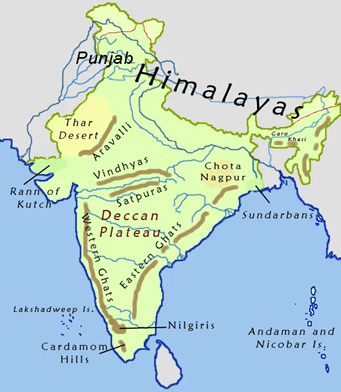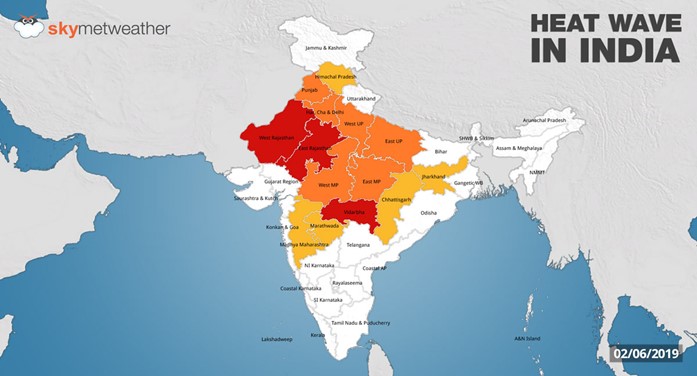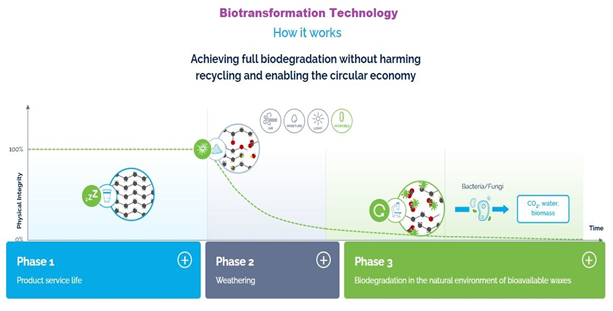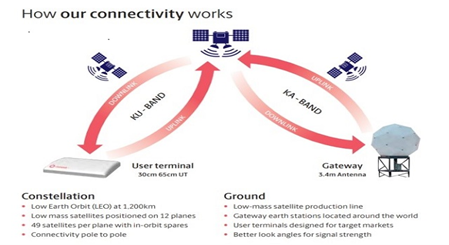IASbaba's Daily Current Affairs Analysis
Archives
(PRELIMS & MAINS Focus)
Syllabus
- Prelims –Geography
Context: Recently, Lebanon saw mass confusion after its government at the last minute delayed the start of daylight saving time by a month.
About Daylight Saving Time (DST):-

IMAGE SOURCE: Daylight saving time – Phần 9 – THIẾT BỊ KHOA HỌC CÔNG NGHỆ (thietbikhoahoccongnghe.com.vn)
- It is the practice of turning the clock ahead as warmer weather approaches and back as it becomes colder again.
- The practice was first suggested by Benjamin Franklin in 1784.
- India does not follow daylight saving time as countries near the Equator do not experience high variations in daytime hours between seasons.
- However, people of the Northeast have demanded a separate time zone to make up for the loss of daylight hours due to the longitudinal breadth of India.
- Several countries, including Australia, Great Britain, Germany, and the United States, adopted Daylight Saving Time during World War I to conserve fuel by reducing the need for artificial light.
- A group of Canadians in Port Arthur (Ontario) were the first to adopt the practice of setting their clocks an hour ahead in 1908.
- Among the biggest disadvantages is the disruption of the body clock or circadian rhythm leading to health issues.
SOURCE: THE INDIAN EXPRESS
PREVIOUS YEAR QUESTIONS
Q.1) In the northern hemisphere, the longest day of the year normally occurs on the: (2022)
- The first half of the month of June
- The second half of the month of June
- The first half of the month of July
- The second half of the month of July
Q.2) On 21st June, the Sun (2019)
- does not set below the horizon at the Arctic Circle
- does not set below the horizon at Antarctic Circle
- shines vertically overhead at noon on the Equator
- shines vertically overhead at the Tropic of Capricorn
Syllabus
- Prelims –Defense
Context: Recently, three iDEX scheme winners secured contracts from Army, Navy & Air Force.
About the iDEX scheme:-
- It is an initiative of the Ministry of Defence.
- It was launched by the Government in April 2018.
- Objective: It aims to create an ecosystem which fosters innovation and encourages technology development in Defence by engaging R&D institutes, academia, industries, start-ups and even individual innovators.
- It is one of the first aims of India as a nation since Independence has been to achieve self-reliance in the field of defence and defence production.
- Its two founding members are Hindustan Aeronautics Limited (HAL) & Bharat Electronics Limited (BEL)
- HAL and BEL are Defence Public Sector Undertakings (DPSUs).
- HAL and BEL are navratna companies.
- India is the world’s largest defence equipment importer.
- iDEX will be funded and managed by a “Defence Innovation Organisation (DIO)‟
- DIO is a “not-for-profit‟ company as per Section 8 of the Companies Act 2013 for this purpose.
- Working: Start-ups or individual applications are invited to provide solutions to these problems and after rigorous evaluation of the applications, winners receive innovation grants in technological areas through the prototype funding guidelines called Support for Prototype and Research Kickstart (SPARK).
- iDEX has partnered with leading incubators in the country to provide hand-holding, technical support and guidance to the winners of iDEX challenges.
MUST READ: Innovations for Defence Excellence (iDEX) Prime
SOURCE: BUISINESSLINE
PREVIOUS YEAR QUESTIONS
Q.1) Atal Innovation Mission is set up under the (2019)
- Department of Science and Technology
- Ministry of Labour and Employment
- NITI Aayog
- Ministry of Skill Development and Entrepreneurship
Q.2) Which of the following is/are the aim/aims of the “Digital India” Plan of the Government of India? (2018)
- Formation of India’s own Internet companies like China did.
- Establish a policy framework to encourage overseas multinational corporations that collect Big Data to build their large data centres within our national geographical boundaries.
- Connect many of our villages to the Internet and bring Wi-Fi to many of our schools, public places and major tourist centres.
Select the correct answer using the code given below :
- 1 and 2 only
- 3 only
- 2 and 3 only
- 1, 2 and 3
Syllabus
- Prelims –Science and Technology
Context: Recently, NALCO-BARC Released India’s 1st Bauxite Certified Reference Material (CRM).
About Bauxite Certified Reference Material (CRM):-
- CRMs are blocks of metal that come with certificates indicating the concentration of their various constituent elements along with their uncertainty levels.
- CRMs are used as calibration standards for analytical methods, instrument performance evaluation, and data quality control in routine analysis of bauxite.
- The CRM was certified for nine property values – Al2O3, Fe2O3, SiO2, TiO2, V2O5, MnO, Cr2O3, MgO and LOI which are traceable to the international system of units.
- NALCO-BARC Released India’s 1st Bauxite Certified Reference Material (CRM).
- This is the first of its kind CRM in India and 5th in the World.
- It is developed by NALCO in joint collaboration with Bhabha Atomic Research Centre (BARC).
- It has been named BARC B1201.
- The CRM will serve as a standard for bauxite testing and analysis, ensuring greater accuracy and consistency in testing.
- It exemplifies India’s commitment to building a robust and dependable testing infrastructure for critical raw materials, which is critical for the country’s economic growth and development.
- The National Centre for Certified Reference Materials (NCCRM), a division of India’s National Physical Laboratory, has certified the bauxite CRM (NPL).
- The certification process included extensive testing and analysis to ensure the CRM meets the highest accuracy and reliability standards.
National Aluminium Company Limited (NALCO):-
- It was established in 1981.
- It works under the Ministry of Mines, Govt. of India.
- It is a Schedule ‘A’ Navratna CPSE.
- It has a registered office in Bhubaneswar.
- It is one of the largest integrated Bauxite-Alumina-Aluminium- Power Complex in the Country.
- It is the country’s leading manufacturer and exporter of alumina and aluminium.
Bhabha Atomic Research Centre ( BARC )
- It is under the Department of Atomic Energy, Government of India.
- It is a multi-disciplinary research centre with extensive infrastructure for advanced research and development covering the entire spectrum of nuclear science, chemical engineering, material sciences and metallurgy, electronic instrumentation, biology and medicine, supercomputing, high-energy physics and plasma physics and associated research for Indian nuclear programme and related areas.
Background:-
- Dr Homi Jehangir Bhabha conceived the Nuclear Program in India and established the Tata Institute of Fundamental Research (TIFR) for carrying out nuclear science research in 1945.
- To intensify the effort to exploit nuclear energy for the benefit of the nation, Dr Bhabha established the Atomic Energy Establishment, Trombay (AEET) in 1954 for a multidisciplinary research program essential for the ambitious nuclear program of India.
- AEET was renamed Bhabha Atomic Research Centre (BARC) after the demise of Bhabha in 1966.
- Important Research Reactors in BARC:-
- Apsara-U (Apsara-Upgraded): indigenously developed Low Enriched Uranium (LEU) fuel in Uranium Silicide form is used in the reactor.
- APSARA was the first research reactor in Asia to achieve criticality.
- ZERLINA was a 100 Watt thermal reactor based on natural uranium metallic fuel and heavy water as both moderator and coolant.
- CIRUS reactor (40 MWth) was built in collaboration with Canada and was commissioned in 1960.
- DHRUVA was conceived in the 1970s out of the need for a research reactor with higher neutron flux for research in basic sciences in addition to a growing demand for radioisotopes and advanced.
- PURNIMA-I was the first experimental fast reactor built in BARC with Plutonium Oxide as the fuel.
- PURNIMA-II was a 100 mW experimental thermal reactor in BARC that achieved criticality in 1984.
- PURNIMA-III was another 233U based 1 W thermal reactor built in BARC intended for mockup studies for the KAMINI reactor.
- Critical Facility for Advanced Heavy Water Reactor (AHWR-CF)
MUST READ: Mali Parbat bauxite mine
SOURCE: PIB
PREVIOUS YEAR QUESTIONS
Q.1) Consider the following minerals: (2020)
- Bentonite
- Chromite
- Kyanite
- Sillimanite
In India, which of the above is/are officially designated as major minerals?
- 1 and 2 only
- 4 only
- 1 and 3 only
- 2, 3 and 4 only
Q.2) Consider the following statements: (2013)
- Natural gas occurs in the Gondwana beds.
- Mica occurs in abundance in Kodarma.
- Dharwars are famous for petroleum.
Which of the statements given above is/are correct?
- 1 and 2
- 2 only
- 2 and 3
- None
Syllabus
- Prelims –Geography and Environment and Ecology
Context: Afforestation Project Green Wall has been launched to revive the Aravallis recently.
About Project Green Wall:-

IMAGE SOURCE: La muraglia verde africana: a che punto siamo – TimeForAfrica
- The Haryana government recently launched an extensive afforestation and plantation project called the “Green Wall” in 75 villages .
- Aim: to revive the Aravallis that is under threat from rampant mining, dumping of waste and encroachments.
- The Aravalli range, has lost so much green cover that it is losing its ability to act as a natural barrier against the heat and dust that blows in from the west.
- The greener it remains, the less likely that the desert will expand into the rest of the Indian landmass.
- The project, was conceptualised on the lines of the African Green Wall programme.
- African Green Wall programme was launched in 2007 by the African Union
- Aim: to restore Africa’s degraded landscapes and transform millions of lives in one of the world’s poorest regions( the Sahel).
- It aimed to increase the amount of arable land
- It was an initiative launched in the Sahel, the region bordering Africa’s Sahara Desert.
- It is a symbol of hope in the face of one of the biggest challenges of our time which is called desertification.
Objectives:-
- Grow economic opportunities for the world’s youngest population
- Grow food security for the millions that go hungry every day
- Grow climate resilience in a region
- The GGW goals will also contribute to 15 of the 17 UN-mandated Sustainable Development Goals.
- It will also contribute to the implementation of the post-2020 global biodiversity framework
About Aravalli Hills:-

IMAGE SOURCE: Aravalli Range – My Udaipur City
- They lie in Northwestern India.
- They are one of the oldest fold mountains of the world, now forming residual mountains with an elevation of 300m. to 900m.
- They stretch for a distance of 800 km. from Himmatnagar in Gujarat to Delhi, spanning Haryana, Rajasthan, Gujarat, and Delhi.
- It separates western India’s Thar desert from the relatively green plains to its east.
- In Rajasthan it is divided into two, main ranges – the Sambhar Sirohi Range and the Sambhar Khetri Range
- They run for about 800 km between Delhi and Palanpur in Gujarat.
- After its formation in Archaean Era (several 100 million years ago), its summits were nourishing glaciers and several summits were probably higher than the present-day Himalayas.
- At the south-west extremity the range rises to over 1,000 m.
- Mt. Abu (1,158 m), a small hilly block lies here.
- Guru Sikhar (1,722 m), the highest peak, is situated in Mt. Abu.
- Pipli Ghat, Dewair and Desuri pass allow movement by roads and railways.
MUST READ: Land Degradation and Desertification
SOURCE: HINDUSTAN TIMES
PREVIOUS YEAR QUESTIONS
Q.1) Consider the following Rivers: (2019)
- Brahmani
- Nagavali
- Subarnarekha
- Vamsadhara
Which of the above rise from the Eastern Ghats?
- 1 and 2
- 2 and 4
- 3 and 4
- 1 and 3
Q.2) Mediterranean Sea is a border of which of the following countries? (2013)
- Jordan
- Iraq
- Lebanon
- Syria
Select the correct answer using the code given below:
- 1, 2 and 3
- 2 and 3 only
- 3 and 4 only
- 1, 3 and 4 only
Syllabus
- Prelims –Polity
Context: In a recent judgement , the Supreme Court held that an affinity test cannot be the litmus test to decide a caste claim.
About Affinity test:-
- Affinity Test is used to shift through anthropological and ethnological traits to link a person to a tribe.
- There is the likelihood that contact with other cultures, migration and modernization would have erased the traditional characteristics of a tribe.
- An affinity test mandates the study and preparation of a report by authorities on caste/tribe claims based on the peculiar anthropological and ethnological traits, deities, rituals, customs, mode of marriage, death ceremonies, methods of burial of dead bodies, etc, of the particular caste or tribe and the applicants knowledge of them.
Caste Claim:-
- Any person who claims to belong to a Scheduled Caste or a Scheduled Tribe or Other Backward Class has to produce a certificate to the Appointing Authority/Selection Committee/Board etc. in support of his claim .
- This makes him eligible for reservation and various relaxations and concessions.
- The Caste/Tribe/Community certificate issued by the appointing authorities in the prescribed form for SCs/STs and for OBCs is only accepted as proof in support of a candidate’s claim as belonging to the Scheduled Caste or the Scheduled Tribe or the Other Backward Class.
MUST READ: Addition of Tribes in ST List
SOURCE: THE HINDU
PREVIOUS YEAR QUESTIONS
Q.1) If a particular area is brought under the Fifth Schedule of the Constitution of India, which one of the following statements best reflects the consequence of it? (2022)
- This would prevent the transfer of land of tribal people to non-tribal people.
- This would create a local self-governing body in that area.
- This would convert that area into a Union Territory.
- The State having such areas would be declared a Special Category State.
Q.2) At the national level, which ministry is the nodal agency to ensure effective implementation of the Scheduled Tribes and Other Traditional Forest Dwellers (Recognition of Forest Rights) Act, 2006? (2021)
- Ministry of Environment, Forest and Climatic change.
- Ministry of Panchayat Raj
- Ministry of Rural Development
- Ministry of Tribal Affairs
Syllabus
- Prelims –Environment and Ecology
Context: A recent study has said that India’s efforts to mitigate heatwaves are “legally weak, under-funded and non-transparent”.
About Heatwaves in India:-

IMAGE SOURCE: Heat wave in India: Heat wave grips the nation, most places under severe heat wave conditions | Skymet Weather Services
- In April 2022, India suffered an early spring heat wave that saw temperatures in New Delhi, topping 46 degrees Celsius.
- In March 2022, which witnessed extraordinary spikes in temperatures, was the hottest ever recorded.
About Heatwaves:-
- A Heat Wave is a period of abnormally high temperatures, more than the normal maximum temperature that occurs during the summer season in the North-Western parts of India.
- Heat Waves typically occur between March and June, and in some rare cases even extend till July.
- The Indian Meteorological Department (IMD) has given the following criteria for Heat Waves :
- Heat Wave need not be considered till maximum temperature of a station reaches atleast 40°C for Plains and atleast 30°C for Hilly regions
- When normal maximum temperature of a station is less than or equal to 40°C Heat Wave Departure from normal is 5°C to 6°C Severe Heat Wave Departure from normal is 7°C or more
- When normal maximum temperature of a station is more than 40°C Heat Wave Departure from normal is 4°C to 5°C Severe Heat Wave Departure from normal is 6°C or more
- When actual maximum temperature remains 45°C or more irrespective of normal maximum temperature, heat waves should be declared.
- Higher daily peak temperatures and longer, more intense heat waves are becomingly increasingly frequent globally due to climate change.
- India too is feeling the impact of climate change in terms of increased instances of heat waves which are more intense in nature with each passing year, and have a devastating impact on human health thereby increasing the number of heat wave casualties.
Impacts of Heat Waves In India:-
- Economic Impacts: The frequent occurrence of heat waves also adversely affects different sectors of the economy.
- Heatwaves also have an adverse impact on daily wage workers’ productivity, impacting the economy.
- Agriculture Sector: Crop yields suffer when temperatures exceed the ideal range.
- Across India, wheat production could be down 6-7% due to heat waves.
- Livestock is also vulnerable to heatwaves. Thus, milk yields in India could drop due to increased heat stress.
- Electricity Usage: Naturally, heatwaves impact power load.
- Human Mortality: Mortality due to heat waves occurs because of rising temperature, lack of public awareness programmes, and inadequate long-term mitigation measures.
- Food Insecurity: The concurrence of heat and drought events are causing crop production losses and tree mortality.
- Impact on Workers: Workers in sectors like agriculture and construction will be severely impacted in 2030 because India’s large population depends on these sectors for their livelihoods.
- Weaker Sections to be Specifically Affected: Heatwaves in India, have the potential to influence thousands of vulnerable and poor people who contributed very little to the climate crisis.
MUST READ: Heatwaves linked to man-made climate change
SOURCE: THE NEW INDIAN EXPRESS
PREVIOUS YEAR QUESTIONS
Q.1) Which one of the following has been constituted under the Environment (Protection) Act, 1986 ? (2022)
- Central Water Commission
- Central Ground Water Board
- Central Ground Water Authority
- National Water Development Agency
Q.2) In the South Atlantic and South-Eastern Pacific regions in tropical latitudes, cyclones do not originate. What is the reason? (2015)
- Sea surface temperatures are low
- Inter-tropical Convergence Zone seldom occurs
- Coriolis force is too weak
- Absence of land in those regions
Syllabus
- Prelims –International Relations
Context: Recently, Britain and its nine partners said they are training Ukrainian military recruits under Operation Interflex.
About Operation Interflex:-
- It is the British-led multinational military operation.
- Objective: to train and support the Armed Forces of Ukraine.
- It aims to teach weapon handling, range activity, marksmanship, fieldcraft basics, field tactics, battle casualty drills, counter explosives, the laws of armed conflict, first aid, and cyber security awareness.
- The operation is a part of the U.K.’s commitment of £2.3 billion for military aid and support to Ukraine.
- It is a successor to Operation Orbital (2015–2022).
- Operation Orbital: It was a British military operation to train and support the Armed Forces of Ukraine in 2015.
MUST READ: FTA India and UK
SOURCE:THE HINDU
PREVIOUS YEAR QUESTIONS
Q.1) Consider the following statements (2020)
- The value of Indo-Sri Lanka Trade has consistently increased in the last decade.
- “Textile and textile articles constitute an important item of trade between India and Bangladesh
- In the last five years, Nepal has been the largest trading partner of India in South Asia
Which of the statements given above is/are correct?
- 1 and 2 only
- 2 only
- 3 only
- 1 ,2, and 3
Q.2) Recently, India signed a deal known as ‘Action Plan for Prioritization and Implementation of Cooperation Areas in the Nuclear Field’ with which of the following countries? (2019)
- Japan
- Russia
- The United Kingdom
- The United States of America
Syllabus
- Mains – GS 3 (Environment)
Context: A UK-based startup claims to have developed a Biotransformation Technology that could alter the state of plastics and make them biodegradable without leaving behind any microplastics.
About Biotransformation technology:

Source: polymateria
- Biotransformation technology is a novel approach to ensure plastics that escape refuse streams are processed efficiently and broken down.
- The tech was co-developed by the Imperial College in London, UK, and a Britain-based startup, Polymateria.
- Plastics made using this technology are given a pre-programmed time during which the manufactured material looks and feels like conventional plastics without compromising on quality.
- Once the product expires and is exposed to the external environment, it self-destructs and bio transforms into bioavailable wax.
- This wax is then consumed by microorganisms, converting waste into water, CO2, and biomass.
- This biotransformation technology is the world’s first that ensures polyolefins fully biodegrade in an open environment causing no microplastics.
Significance for India:
- India is generating 3.5 billion kgs of plastic waste annually and that the per capita plastic waste generation has also doubled in the past five years. Of this, a third comes from packaging waste.
- A joint research project by Department of Management Studies, IIT Delhi, and Sea Movement noted that Amazon generated, nearly 210 million kgs (465 million pounds) of plastic from packaging waste in 2019.
- They also estimated that up to 10 million kgs (22.44 million pounds) of Amazon’s plastic packaging ended up in the world’s freshwater and marine ecosystems as pollution in the same year.
Applications
- Food packaging and health care industries are the two prime sectors that could use this technology to reduce waste.
- Agriculture: Plastic mulch films are extensively used in agriculture to conserve moisture and control weed growth.
- Biotransformation technology can be used to develop biodegradable mulch films, reducing the environmental impact of plastic waste in the agriculture sector.
- Textile industry: Synthetic textiles like polyester and nylon are widely used in the textile industry and are a significant contributor to plastic waste.
- Biotransformation technology can be used to develop biodegradable textiles that can break down naturally, reducing the environmental impact of plastic waste in the textile industry.
- Automotive industry: The automotive industry is a significant consumer of plastic products, including plastic components and packaging materials.
- Biotransformation technology can be used to develop biodegradable plastic components and packaging materials, reducing the environmental impact of plastic waste in the automotive industry.
- Construction industry: Plastic products like PVC pipes and sheets are widely used in the construction industry and are a significant contributor to plastic waste.
- Biotransformation technology can be used to develop biodegradable plastic products for the construction industry, reducing the environmental impact of plastic waste.
Steps taken by the Indian government to address the issue of plastic waste:
- Government introduced a plastic waste management gazette to help tackle the ever-growing plastic pollution caused by single-use plastics.
- In 2022, the Indian government imposed a ban on single-use plastics to bring a stop to their use in the country.
- The National Dashboard on Elimination of Single-Use Plastic and Plastic Waste Management brings all stakeholders together to track the progress made in eliminating single-use plastic and effectively managing such waste.
- An Extended Producer Responsibility (EPR) portal helps in improving accountability traceability and facilitating ease of compliance reporting in relation to EPR obligations of the producers, importers, and brand-owners.
- India has also developed a mobile app to report single-use plastics grievances to check the sale, usage or manufacturing of single-use plastics in their area.
Way Forward:
Other alternatives such as coir, bagasse, rice and wheat bran, plant and agricultural residue, banana and areca leaves, jute and cloth.-based packaging could potentially cut down plastic waste. This could also build sustainability within the paper industry, and save on the import bill on ethylene solutions. Wooden packaging is yet another alternative, but that will make the packaging bulkier and increase the cost.
Source: The Hindu
Syllabus
- Mains – GS 3 (Science and Technology)
Context: Recently The Indian Space Research Organisation (ISRO) rocket carried 36 OneWeb broadband satellites toward low Earth orbit (LEO) which is a circular path about 280 miles (450 kilometers) above Earth.
About OneWeb Constellation:
- OneWeb Constellation is a satellite-based network that aims to provide high-speed, low-latency internet connectivity worldwide.
- It is a collaborative project between the UK-based OneWeb Group and the Indian Space Research Organisation (ISRO), in partnership with NewSpace India Ltd(NSIL).
OneWeb Satellites Connectivity:

Source: https://www.electronicsweekly.com
Significance:
- OneWeb Constellation already provides connectivity solutions in various key locations worldwide and continues to expand its network to bring more areas online.
- The high-speed, low-latency solutions offered by OneWeb will help connect communities, businesses, and governments around the world, demonstrating the immense potential of LEO connectivity.
- The constellation will bring secured solutions not only to enterprises but also to towns, villages, municipalities, and schools, including the hardest-to-reach areas across India.
Advantages of OneWeb broadband:
- Global Coverage: Space-based broadband systems can provide coverage to even the most remote and isolated areas of the world, which is often not possible with traditional ground-based broadband systems.
- High Speeds: Space-based broadband systems can provide high-speed internet connectivity to users, which is crucial for many applications, such as video conferencing, cloud-based services, and real-time data transfer.
- Bridging the Digital Divide: Affordable and high-speed broadband connectivity to remote and underserved areas that currently lack reliable internet access will help to bridge the digital divide.
- Low Latency: Space-based systems can significantly reduce latency compared to traditional satellite-based systems, which can make a significant difference in many applications, such as online gaming and virtual reality.
- IoT and Machine-to-Machine Communication: It can support the growing number of Internet of Things (IoT) devices and enable machine-to-machine communication, which is becoming increasingly important in industries such as agriculture, transportation, and logistics
- Disaster Response: The system can be quickly deployed to provide emergency communication services in the aftermath of natural disasters, such as hurricanes, earthquakes, and floods thus helping to save lives and coordinate relief efforts more effectively.
- Scalability: Space-based broadband systems can be scaled quickly and easily to meet increasing demand, which is essential in areas experiencing rapid population growth or where there is a sudden surge in demand due to an emergency or disaster
- Redundancy: It can provide a redundant connection to users in areas where traditional broadband systems are unavailable, which is critical in emergency situations.
- Improved Connectivity for Air and Sea Travel: Low latency, high-speed of space-based broadband network can improve connectivity for air and sea travel, enabling passengers to stay connected during their journey and improving safety for ships and planes.
Major challenges of space-based broadband projects:
- Cost of the project: Launching satellites into orbit is expensive, and the cost of building, launching, and maintaining a constellation of satellites can be very high.
- Technical issues: Satellites must be able to communicate with ground stations and with each other, and there are many technical challenges associated with designing, building, and operating a constellation of satellites.
- Orbital debris: The increasing amount of debris in space can pose a risk to satellites and their operations.
- Environmental concerns: The deployment of large constellations of satellites can have an impact on the space environment, potentially increasing the risk of collisions and contributing to the accumulation of orbital debris.
- Regulatory issues: Space-based broadband projects must comply with national and international regulations governing the use of space, including regulations related to radio frequency interference, orbital debris, and spectrum allocation.
Way Forward:
OneWeb will bring secured solutions not only to enterprises but also to towns, villages, municipalities and schools, including the hardest-to-reach areas across the country. Overall, the OneWeb broadband system has the potential to transform the way we connect and communicate, and make the benefits of the internet accessible to everyone, regardless of where they live or work.
Source: The Hindu
Practice MCQs
Q.1) Consider the following statements regarding Aravalli Range in India:
- It spreads across four states only
- It is one of the oldest block mountains of the world
- Abu is the highest peak in the range
Which of the statements given above is/are correct?
- 1 and 2 only
- 2 only
- 3 only
- 1 and 3 only
Q.2) Consider the following statements regarding iDEX scheme:
- It is an initiative of the Ministry of Science and Technology
- It aims to create an ecosystem which fosters innovation and encourages technology development in Defence
Which of the statements given above is/are correct?
- 1 only
- 2 only
- Both 1 and 2
- Neither 1 nor 2
Q.3) Operation Interflex and Operation Orbital are often mentioned in news related to
- British-led military operations to support Ukraine
- Space programmes launched by NASA
- Humanitarian assistance by Indian govt during Turkey–Syria earthquake
- None of the above
Comment the answers to the above questions in the comment section below!!
ANSWERS FOR ’ 21st March 2023 – Daily Practice MCQs’ will be updated along with tomorrow’s Daily Current Affairs.st
ANSWERS FOR 20th March – Daily Practice MCQs
Q.1) – d
Q.2) – b
Q.3) – c














